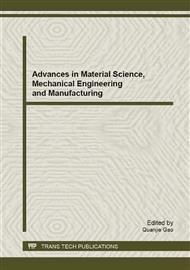p.400
p.403
p.407
p.412
p.417
p.422
p.428
p.432
p.436
Research of the Halogen Phosphate Green Luminescent Materials Prepared by Sol-Gel Microwave-Assisted
Abstract:
In this paper, we used the sol-gel method to get the green luminescent material precursors and prepared the Sr5(PO4)3Cl: Tb3+, Tm3+ green luminescent material by microwave-assisted sintering. Then we have studied the effects of different microwave time and power changes to samples structure and morphology, the effects of different halogen changes to samples structure and morphology, and the effects of different doping concentration and Halogen changing to luminescent properties. Using the X-ray diffractometer we study the samples crystal structure and survey the morphology and size by the scanning electron microscopy. Through the luminescent spectroscopy study the effects of Halogen changing. The results shows that: the optimum reaction conditions are microwave-assisted sinter at 800W for 60 min. Using F, Cl , Br three halogen prepared a halogen phosphate luminescent material, optimal luminous intensity are chlorine phosphate.
Info:
Periodical:
Pages:
417-421
Citation:
Online since:
August 2013
Authors:
Keywords:
Price:
Сopyright:
© 2013 Trans Tech Publications Ltd. All Rights Reserved
Share:
Citation:


